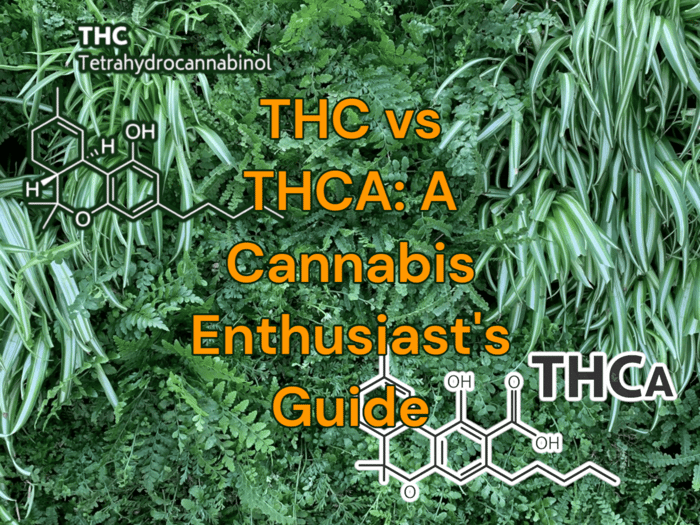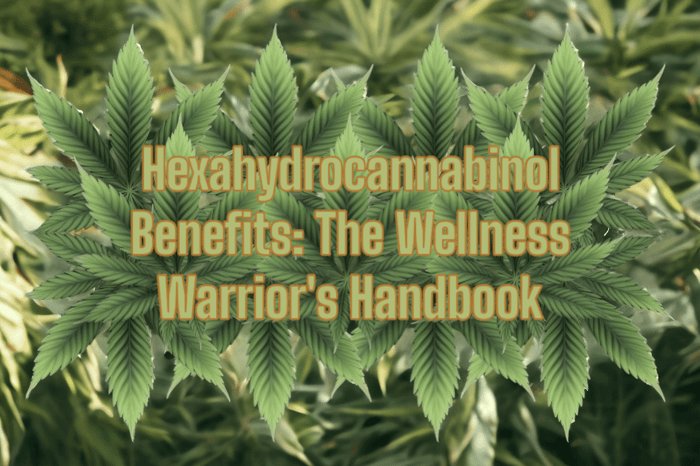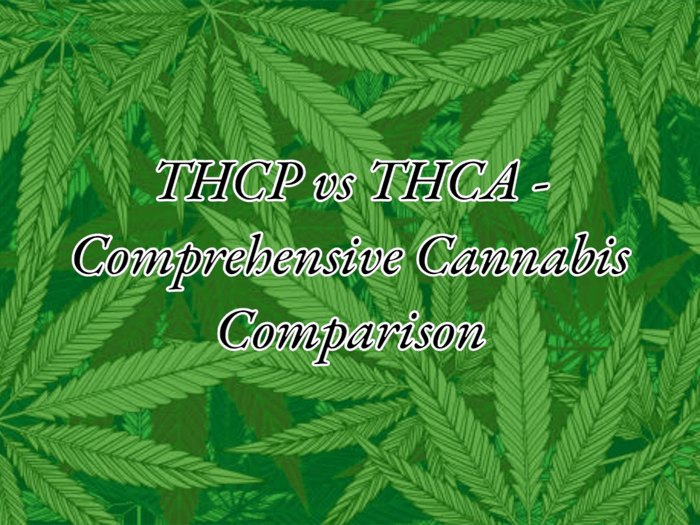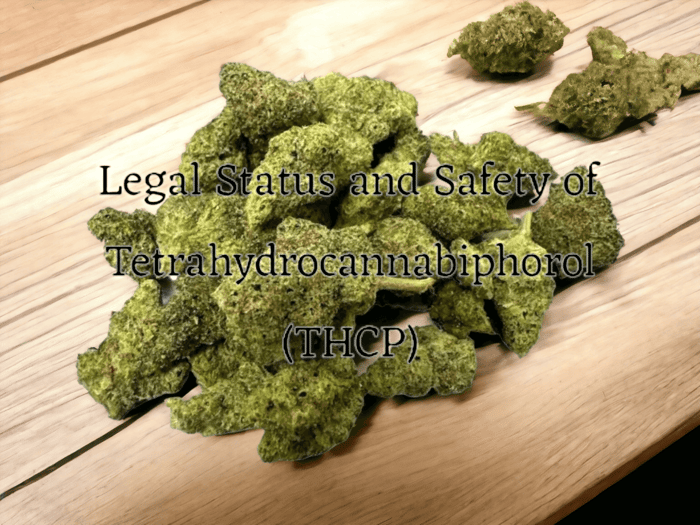
Understanding THC and THCA: A Comprehensive Guide for All Cannabis Enthusiasts
Understanding THC and THCA
A Closer Look at THC and THCA
In the biological structure of cannabis, two prominent compounds are recognizable: Tetrahydrocannabinolic Acid (THCA) and Tetrahydrocannabinol (THC). These compounds exist in symbiosis within the plant and play a significant role in the plant's life cycle, in addition to affecting human consumers psychologically and physically.
Defining THC and THC-A
THC, short for Tetrahydrocannabinol, is a cannabinoid compound that interacts with the human body's endocannabinoid system to produce psychoactive effects or "high".
THC-A, or Tetrahydrocannabinolic acid, is the precursor of THC and is found in raw and live cannabis. THC-A transforms into THC when subjected to the process of decarboxylation, typically through heat.
The Significance in Cannabis Plants
THC-A and THC exist side-by-side within cannabis plant tissues, impacting the plant's development and the effects it will have on users. While inactive in its raw form, THC-A converts to the psychoactive THC when exposed to heat, such as when the cannabis is smoked or vaped.
Clear Cut Information about THC and THC-A
Deciphering THC: The Psychoactive Compound
While popular opinion often perceives THC as the only psychoactive compound in cannabis, this is a misconception. The transformative properties of THC-A to THC are what make cannabis psychoactive. Essentially, without THC-A, there would be no THC.
Not Just THC: Understanding THCA's Role
Common misunderstandings surround THCA's role in cannabis. Many individuals tend to overlook the non-psychoactive nature of THC-A. Despite being the precursor to THC, THC-A does not produce a "high" in its raw form. The psychological effects only occur after heat induces decarboxylation, converting THC-A into THC.
What is THC - A Deeper Insight
THC, scientifically known as Tetrahydrocannabinol, is one of more than 100 chemical compounds found in the cannabis plant. It is primarily responsible for the psychoactive effects commonly associated with cannabis use.
Understanding THC
Chemical Structure
The THC molecule comprises a cyclic ring and a hydrophobic tail. It possesses relatively low solubility in water due to its lipophilic species, which is the backbone of its particular path in the body. THC's structure is similar to an endocannabinoid named anandamide, which is naturally produced in the body, facilitating THC to interact readily with cannabinoid receptors in the brain.
Production of THC in the Cannabis Plant
THC is produced in the glandular trichomes of the cannabis plant. It originates as tetrahydrocannabinolic acid (THC-A) which when heated, undergoes decarboxylation to produce THC. This process, often termed 'activation', transforms the non-psychoactive THC-A into the psychoactive THC.
Effects of THC
Upon consumption, THC interacts with the physiological endocannabinoid system (ECS) of the body, altering various physiological and cognitive processes.
Euphoric “high” feeling
THC's binding with the cannabinoid receptors, especially CB1 receptors in the brain, stimulates the release of dopamine which results in the characteristic euphoric “high” feeling associated with cannabis use.
Reduction in Pain
THC may also help to reduce pain. Research suggests that cannabis-based medicines having THC show effectiveness in relieving neuropathic pain and improving sleep quality.
Increased Appetite
One well-known effect of THC is increased appetite. THC acts on the hypothalamus of the brain, leading to an increase in the hormone ghrelin, a known appetite stimulant.
Altered Senses
Cannabis consumption can lead to altered sensory perception, including intensification of taste, smell, and hearing. It can also distort the sense of time, often making it seem slowed down.
Medicinal Benefits of THC
Apart from the psychoactive effects, THC also offers various medicinal benefits, which have led to its use in therapeutic applications.
Treatment of Glaucoma
THC has been shown to lower intraocular pressure in people suffering from glaucoma, offering potential relief for patients.
Assistance with Insomnia
Research indicates that THC might optimize sleep. In one study, participants experienced improved sleep efficiency and shorter time taken to fall asleep.
Alleviating Symptoms of Nausea
THC-based medications are used to treat chemotherapy-induced nausea and vomiting. Research has shown that these treatments can improve symptoms in patients who do not respond to other antiemetic therapies.
Elements of THC-A
THC-A, or Tetrahydrocannabinolic Acid, is a precursor to the more well-known THC. It arises from the conversion of CBGA (Cannabigerolic acid) into different cannabinoids, including THC-A.
Chemical Structure of THC-A
From a structural standpoint, tetrahydrocannabinolic acid mirrors the common cannabinoid - THC - with the exception of an additional carboxyl group. This molecular inclusion is what makes THC-A an acid-based compound. Over time and under heat, this carboxylic acid group breaks away from the THC-A molecule through a process known as decarboxylation, transforming it into the well-known psychoactive compound of THC.
THCA in Raw Cannabis
While THC is often associated with cannabis, the raw plant actually contains very little of this compound. Instead, fresh, undried cannabis is rich in THC-A. As the raw cannabis plant dries and ages, the THC-A it contains begins to convert into THC, the primary psychoactive compound in cannabis.
Potential Effects of THC-A
Non-Psychoactive Nature of THC-A
Unlike THC, the compound that gives cannabis its infamous psychoactive effects, THC-A is non-intoxicating. This is due to the way in which THCA interacts with the body's endocannabinoid system, a complex network of receptors found in the human nervous system. Specifically, THC-A does not bind directly to CB1 receptors, the pathway THC uses to induce its effects, hence the non-psychoactive nature of THCA.
Neuroprotective Properties of THC-A
Research also suggests that THC-A may protect against neurodegenerative diseases. A study in the British Journal of Pharmacology found that THC-A could protect against neurodegeneration, potentially making it a valuable compound in the fight against conditions like Parkinson's Disease.
Medicinal Significance of THC-A
Anti-Inflammatory Properties
Many studies on THC-A point to the compound's potential anti-inflammatory benefits. According to research in the Journal of Molecules, THC-A demonstrates remarkable properties in this category, suggesting it may be effective in treating conditions like arthritis and lupus.
Antioxidant Benefits
Beyond inflammation, THC-A is also associated with potential antioxidant properties. Oxidative stress, a process tied to a wide range of chronic diseases, can potentially be curbed by antioxidants like THC-A, once again affirming the potential therapeutic relevance of this cannabinoid acid.
Potential in Prostate Cancer Treatment
Emerging research also suggests that THCA may even inhibit the proliferation of prostate cancer cells. According to a study in the Bioorganic & Medicinal Chemistry Letters, THC-A demonstrated a potential inhibitory effect on prostate carcinoma cells, though further investigation of this potential therapeutic application is needed.
The Key Differences: Comparing THC and THC-A
Although often mistaken as the same and used interchangeably, THC and THC-A are two distinct compounds with unique characteristics. The ability to distinguish between THC and THC-A greatly augments your understanding of cannabis and its effects.
Chemical Composition Differences
The principal difference between THC and THC-A is driven by their chemical compositions.
Presence of a Carboxyl Group in THC-A
A vital and distinguishing feature of THC-A compared to THC is the presence of the carboxyl group. THC-A has an extra carboxyl group (COOH) attached to its carbon structure. When exposed to heat in a process known as decarboxylation, this extra carboxyl group is detached, converting THC-A into THC. The removal of the carboxyl group essentially causes THC-A to lose its acidic properties and attain the psychoactive properties of THC.
Psychoactive Properties
The presence and absence of psychoactive traits are another significant differentiator between these two compounds.
Presence in THC and Absence in THC-A
THC is well-known for its psychoactive effects, which cause the 'high' associated with cannabis use. THC-A, on the other hand, is non-intoxicating and does not induce the psychoactive effects seen in THC. This non-psychoactive nature of THC-A is largely due to its carboxyl group, which inhibits the compound from fitting into the body's cannabinoid receptors. Upon decarboxylation and loss of the carboxyl group, THC-A becomes THC and can comfortably interact with the cannabinoid receptors, leading to its well-known psychoactive effects.
Comparison of Medicinal Benefits
Despite their differences in composition and psychoactive properties, both THC and THC-A offer significant medicinal benefits.
THC, owing to its psychoactive properties, is often employed for its analgesic, anti-emetic, and anti-inflammatory benefits. It is also commonly used to stimulate appetite in patients suffering from diseases like HIV/AIDS and certain types of cancer.
On the other hand, THC-A, whilst non-psychoactive, has a rich repertoire of therapeutic uses. It has been extensively studied for its role in managing inflammation, nausea, neurodegenerative diseases, and prostate cancer. Promising research also suggests that THC-A may carry potential for treating epilepsy, making the detailed understanding of THC vs THC-A crucial for medical applications.
Understanding Different Methods of Consumption for THC and THC-A
There are several ways to consume THC and THCA, each offering a varying set of effects and experiences. From smoking to sublingual methods, the consumption mode of these chemical compounds is not one-size-fits-all.
Consumption Options for THC
Smoking
Smoking is perhaps the most common method of consuming THC. This involves either rolling cannabis into a joint or using a pipe or bong. When THC is combusted and inhaled, the effects, both medicinal and psychoactive, can be felt within minutes.
Edibles
Another popular method of consuming THC is through edibles. These are food products infused with cannabis, such as cookies, brownies, gummy bears, and more. The onset of effects from edibles is typically slower than smoking, usually taking between 30 minutes to 2 hours, but the effects can last much longer and often feel more potent.
Oils
Cannabis oils are concentrated forms of THC that can be used in cooking or taken orally. Like edibles, the effects can be stronger and last longer than with smoking. However, oils are often more potent, so dosage should be carefully monitored.
Sublingual Absorption
THC can also be consumed sublingually, meaning under the tongue, usually in the form of tinctures or sprays. This method allows for faster absorption into the bloodstream, with effects felt within 15 to 45 minutes. This method is often preferred for its ease of use and faster onset than edibles.
Consumption Options for THCA
Raw Cannabis
Since THCA is found in raw and live cannabis, consuming fresh cannabis leaves or buds can provide the health benefits of this compound without the psychoactive effects. However, raw cannabis has a strong flavor that may not be palatable to some.
Juicing
Another method of consuming THCA is through juicing. Fresh cannabis leaves and buds are used in a juicer, often combined with other fruits and vegetables, to produce a nutritious drink. The raw cannabis must not be heated, or else THCA will convert to THC.
Tinctures
THCA can also be consumed in the form of tinctures. Similar to THC tinctures, these are concentrated extracts that can be placed under the tongue for quick absorption. The benefit of tinctures is that, like raw cannabis and juicing, they deliver the medicinal qualities of THCA without the psychoactive effects of THC.
The Effects of Each Consumption Method
Each consumption method can drastically influence the onset, intensity, and duration of the effects. As such, the optimal method depends largely on individual preference and the desired outcome. For instance, smoking or sublingual absorption provides fast results, making them preferable for those seeking immediate relief. However, for a more extended and potent experience, edibles, and oils may be more suitable. When consuming THCA, raw or juiced cannabis can provide the associated health benefits without the mind-altering effects associated with THC.
Understanding THC and THCA: A Summary and the Implications
In the complex domain of cannabis compounds, THC and THCA have emerged as key players. Each has unique properties and potential benefits, and understanding those distinctions is crucial for cannabis users.
Describing THC and THCA
THCA, or tetrahydrocannabinolic acid, is a non-intoxicating compound predominantly found in raw and live cannabis. By comparison, THC or tetrahydrocannabinol is a psychoactive compound that gives cannabis its euphoric effects. It's important to understand that THCA, when exposed to heat through a process known as decarboxylation, transforms into THC.
Bolstering Well-being with THC and THCA
Both THC and THCA have shown potential in enhancing well-being. Researchers have discovered that THC can produce pain-relieving effects, induce relaxation, and stimulate appetite. Meanwhile, THCA has shown promise in its anti-inflammatory, neuroprotective, and anti-emetic properties.
Significance of THC and THCA in Choosing Consumption Method
Understanding the distinction between THC and THCA is critical in determining an ideal consumption method. For instance, if the goal is to experience the psychoactive "high", decarboxylated cannabis products that enable the conversion of THCA to THC would be suitable. Conversely, raw cannabis products can be a good source of THCA.
In conclusion, the cannabis landscape is multifaceted. A deeper understanding of THC and THCA, the differences between them and their potential health benefits would allow users to make fully informed choices regarding their cannabis consumption.




